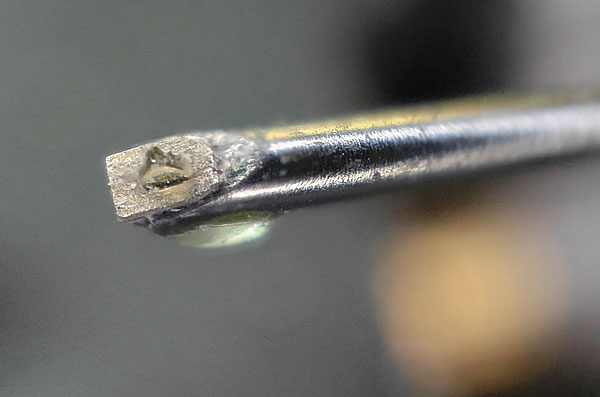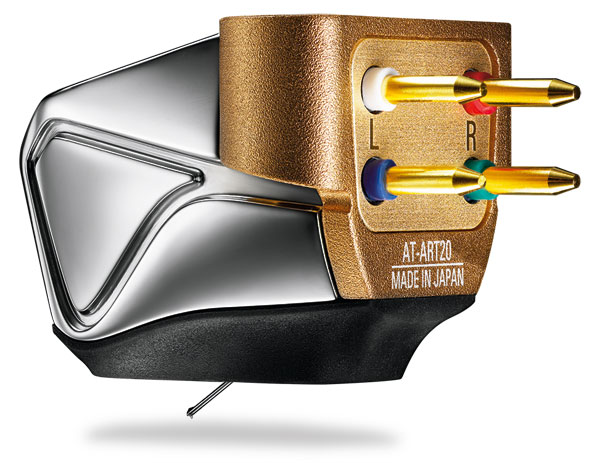Audio-Technica AT-ART20 Cartridge Page 2
One advantage that it has, however, is a good response to variations in loading. Dropping the MC input impedance on my Yamaha C-5000 preamp [HFN Aug '20] down to 30ohm made the sound brighter, uncomfortably so on unforgiving material. An increase to 300ohm smoothed things out somewhat, but I also found that this tended to add a slight recess to the upper midband, so I stuck with the recommended 100ohm loading for the duration of my time with this sophisticated MC.

Set To Stun
Configured like this, the spatiality and depth to the AT-ART20's soundstage was approaching masterful. The soulful, articulate vocals on 'Celestial Echo' from Malia & Boris Blank's Convergence release [Universal 374 593-2] appeared set precisely between my loudspeakers and slightly in front of them. The track's ethereal, percussive effects darted fluidly from speaker to speaker, while the whole performance was founded on a sinuous and firm bassline. This 2014 album is an often-played favourite of mine and although I won't make any fanciful claims of hearing it 'like I've never heard before', the AT-ART20 certainly pulled out features of the instrumentation that might normally languish towards the back of the mix.
As to guessing the make of guitarists' strings, someone with more knowledge of such things than me might well be able to do this using the AT-ART20, such is the feeling of detail. The interplay between the acoustic guitar and harmonica on 'War Song Soldier', from Gerry Cinnamon's The Bonny LP [Little Runaway Records GCINH005DLX], was delightful, and both instruments could easily have been in my room. The leading edges of the plucked guitar strings in particular had real form to them – there was no doubt this was a very real instrument and not a modern electronic facsimile.
Plumbing The Depths
The sound here is not all top-end light and touch, though: the fulsome levels of detail exhibited by the AT-ART20 can be found right down to its low end. Occasionally, when a transducer excels in the upper reaches of the frequency range, bass can play something of a second fiddle (if you'll pardon the pun), yet Audio-Technica's AT-ART20 avoids this by offering a deep, effortless and detailed bottom end that rounds out the performance.
I'd already experienced tangible bass impact with the Malia & Boris Blank track, and it kept reappearing with all sorts of other material. The crashing timpani at the climax of Ravel's Boléro, played by the Netherlands Philharmonic Orchestra conducted by Carlo Rizzi [Tacet L207], thundered through my room, as did the rack-toms rolling from left to right across the soundstage on the intro to blues/folk musician Steve Earle's 'Copperhead Road', from the album of the same name [MCA Records MCF 3426].
Often, this piece feels like a strictly enforced sonic buffet for a cartridge, where it's only allowed one choice and can pick impact or detail, but not both. It's a rare transducer that manages to grab the two together, but the AT-ART20 clearly joined the queue twice, loaded its plate and refused to relinquish either.

This 'best-of-both-worlds' skill makes the AT-ART20 an impressive all-rounder, however I kept coming back to the wonderful levels of atmosphere and precise performer location it exhibited. Jessie Ware was definitely singing from the rear of the soundstage when performing 'Remember Where You Are' on her What's Your Pleasure? LP [Virgin Records V3245], while the 'backing' vocalists were spread out in front of her. Yet the hint of echo on her voice came through exquisitely, lifting the track to joyous heights.
Altogether Now
At all times the AT-ART20 never lost sight of the overall musical message it had been asked to deliver. It's all very well picking up every last nuance of a performance, but if you can't bring it all together as a cohesive and flowing whole, then the effort is wasted. The AT-ART20 gets the balance right, and shows that Audio-Technica, with its 60 years of cartridge experience, has no desire to rest on its laurels.
Hi-Fi News Verdict
The AT-ART20 is a fitting addition to Audio Technica's birthday celebrations. Soft, warm and romantic it is not, but the level of detail it pulls from everyday record grooves is, at times, truly astonishing. It is easy to configure, tracks superbly and turns in a cohesive and thoroughly enjoyable musical performance. If its tonal balance is to your liking, then, like me, you could find yourself smitten.
























































